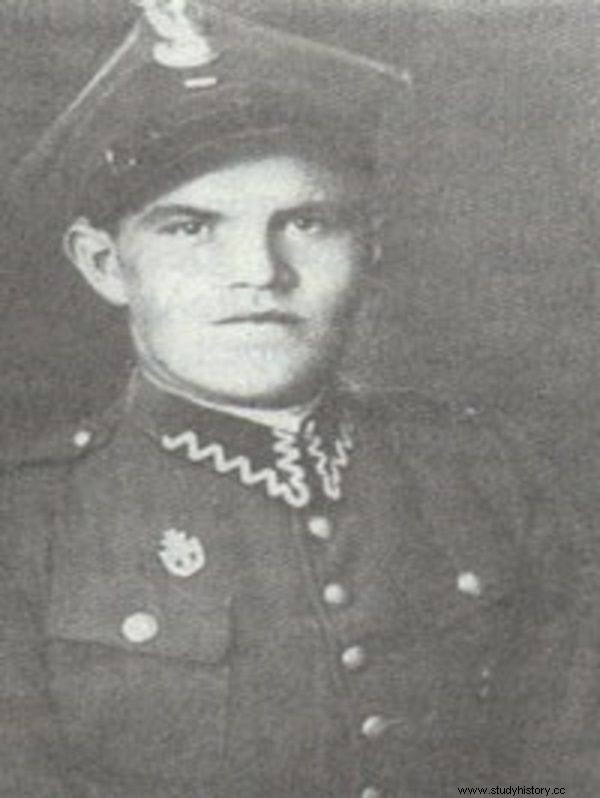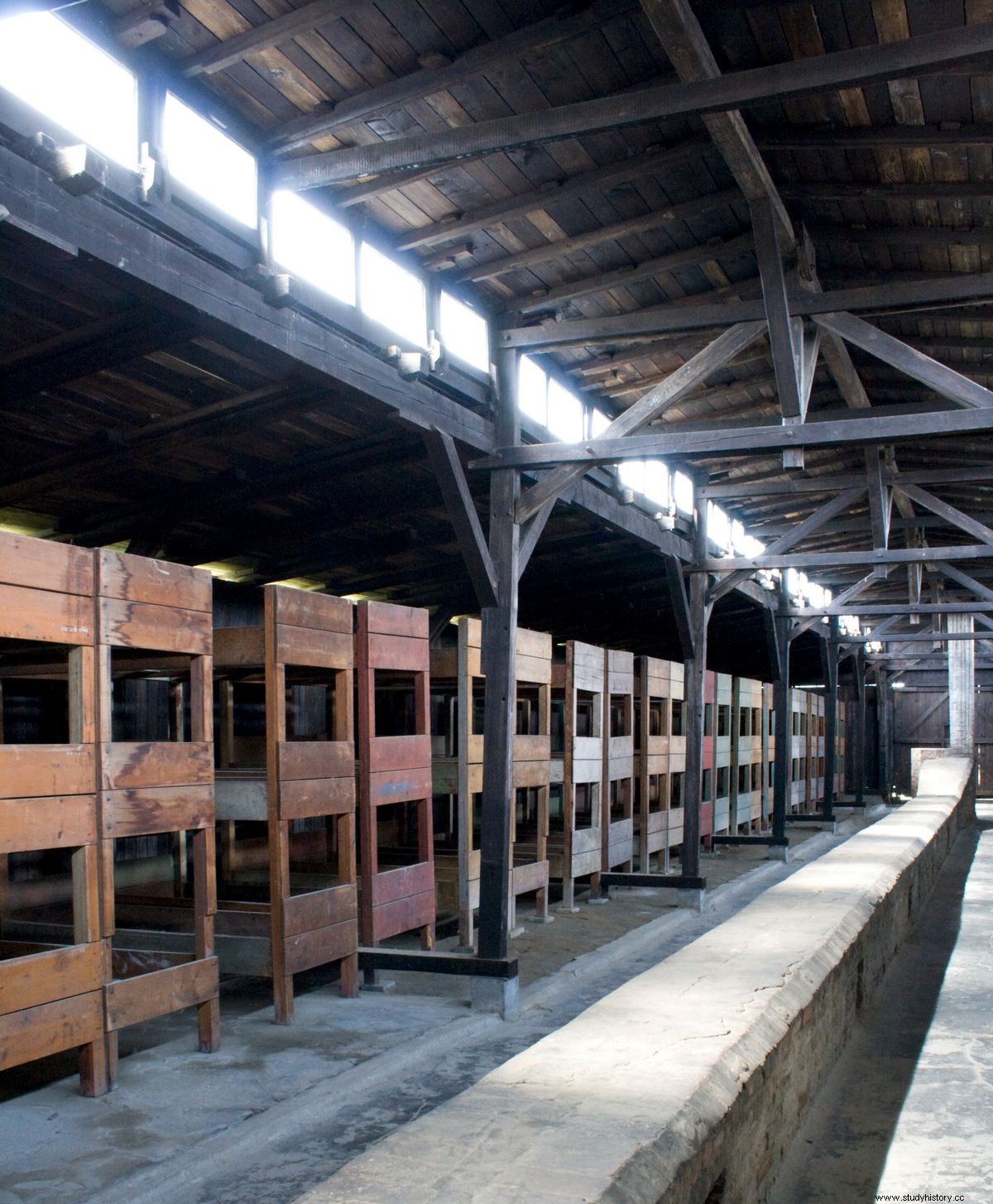The deportation to Auschwitz sounded like a certain death sentence, and it usually was. However, fate likes to surprise - it turns out that it was possible to arrive at the camp in the first transport, receive the lowest number and ... survive. And then not only the end of the war, but also the beginning of the 21st century!
On April 27, 1940, the Reichsführer SS Heinrich Himmler issued an order to establish a concentration camp in Oświęcim, in the place where the Polish Army barracks were located before the war, on the banks of the Vistula and Soła rivers. At this point, the history of the place began, the name of which became synonymous with the atrocities of the German occupier in Poland.
Less than two months later, on June 14, 1940, the first group of political prisoners arrived at the Auschwitz camp. It was a total of 728 people, almost exclusively Poles. They were the nucleus of the population of the future extermination camp. Fortunately, they couldn't have realized it at the time.
A train from Tarnów
The first transport came from another town in Lesser Poland - Tarnów. The group was taken from the local prison and transported to the newly created camp by train. During the trip, many prisoners were convinced that they were going to work in Germany. They remembered a particularly depressing stop at the Krakow train station - then watched the cheering Germans celebrating the news that the Wehrmacht had captured Paris.
Among the first to arrive at Auschwitz were mainly political prisoners, i.e. soldiers from the September Campaign or members of the early underground structures. Among them was, for example, the legendary Tatra courier, the pre-war Olympian Bronisław Czech, who, unfortunately, did not live to see the end of the war. He died in the camp of exhaustion in 1944.
One of the members of the transport was also a twenty-five-year-old student of a construction school in Jarosław - Stanisław Ryniak. He was given a historic role. It was he who received the first, lowest camp number - 31.

Loading of the first transport of Polish prisoners of Auschwitz. Tarnów, June 14, 1940. Among them was Stanisław Ryniak.
Why was the first prisoner of Auschwitz given the number 31 and not 1? This is due to the fact that in May 1940, a month before the first Polish transport to Auschwitz, 30 German criminals from the Sachsenhausen camp were brought to the site. They became the so-called function prisoners - kapos. And they got numbers from 1 to 30.
Ryniak himself could not explain later why he was given the first Polish number on the list. Neither the alphabet nor the early date and circumstances of the detention indicated that. The Germans arrested him in May 1940 along with other adolescent members of the Jarosław underground. He fell victim to a mass raid in the school building and after a few days he was sent to the prison in Tarnów. Probably about the fact that it was he who became de facto the first prisoner of Auschwitz, had to be mere coincidence .
A brutal welcome and four years of hell
On the 50th anniversary of the liberation of the camp, former prisoner number 31 recalled his first day in Auschwitz as follows:“The camp was driven into the camp with sticks. And at the very beginning it was announced that it would not be a sanatorium ”. He was referring to the famous speech made by the deputy commandant Rudolf Hoess, SS-Hauptsturmführer Karl Fritzsch to welcome the first group of prisoners.
To the place where it was delivered, prisoners were forced to use violence from a railway ramp. Standing in a chair, Fritzsch spoke to the crowd with the following words (translated simultaneously by the screaming interpreter):
You came here not to a sanatorium, but to a German concentration camp, from which there is no other way out but through the chimney . If someone does not like it, he can go straight to the wires. If there are Jews in the transport, they have the right to live no longer than two weeks, priests a month, the rest three months.
Nothing but a real ordeal could be expected from such a greeting. And unfortunately, this was what everyday life in the camp was like. And yet, although it is beyond belief, Stanisław Ryniak managed to survive in this place for four years! "I don't know how I survived, I don't know where I got the strength to survive it all" - said the interested person himself in an interview in 1995. In Auschwitz, he worked, among others, on the construction of a complex which, before his eyes, turned into a place of mass extermination of hundreds of thousands or even a million people.
Visiting the camp years later, the former first prisoner admitted that those events were still alive there and that he was unable to free himself from them. He even recalled the first 20-hour penalty appeal - the longest in the history of the camp - organized after the first escape. The lucky one who found himself behind the fence on July 6, 1940, was Tadeusz Wiejowski.

The first to escape from Auschwitz was Tadeusz Wiejowski.
Unfortunately, among his colleagues remaining in the barracks, this event went down in history also because of its brutality. The first public flogging was carried out at that time, and the Jew David Wongczewski was tortured to death, thus becoming the first official victim of Auschwitz.
Conversation with an executioner
For four years, Ryniak witnessed all the atrocities that were served to the unfortunates arriving at the camp - selections to the gas chambers, executions, but also the daily, almost animal brutality of the guards. He also watched the tragedy of his friend from the first transport, Edek Galiński, who, together with his beloved Jewish woman Mala Zimetbaum, attempted to escape. The couple were captured by the Germans and murdered.
Paradoxically, he could have helped him survive… just a low number. It was believed that prisoners from the first transport enjoyed certain respects and special respect even among SS men . Apparently, one day Ryniak ended up in the office of the camp commandant himself, Rudolf Höss, for this reason.
During the conversation, which was preceded by a thorough bath, nothing bad happened, but unfortunately it did not bring any positive effect either. At first Höss was amazed that the first prisoner was still functioning, to say cynically after a while that if he survived so much, it means ... that apparently it is not that bad in the camp!

The commandant of Auschwitz, Rudolf Höss, was surprised that Ryniak survived in the camp for so long. He took it as "evidence" that the conditions in the camp were not that hard.
Ryniak finally left Auschwitz on October 28, 1944. He was taken by penal transport to Leitmeritz, where the Flossenbürg sub-camp was located. There he was sent to work in quarries. This is how he lived to see the longed-for day of liberation - and this one came exceptionally late, on the day of the end of World War II, on May 8, 1945. For comparison - Auschwitz was liberated in January this year…
At the time of his freedom, number 31 weighed only forty kilograms. Exhausted, he returned to his family home in Sanok. His mother couldn't believe that he was talking to her son and that he had lived so many years in the camp hell.
Post Auschwitz
After the war, Ryniak graduated from the Technical University in Wrocław. He became an architect engineer. He connected with the capital of Lower Silesia all his later life. Among other things, he worked on the reconstruction of the city destroyed by the war.
At the same time, he was involved in the life of the community of former prisoners of the German camp. Every year he came to the museum in KL Auschwitz-Birkenau for anniversary celebrations. “I believe that all the surviving camp facilities should be preserved and carefully preserved in order to bear witness to the truth. When we're gone, the stones will speak for us "- said the Polish Press Agency.

The truth about the horror of the German occupation in the book by Dariusz Kaliński entitled "Balance of harms" .
He died many years after the war, on February 13, 2004 in Wrocław, at the age of 89. He was buried in the Osobowice Cemetery. His children recalled that he was not particularly eager to tell stories about hell behind him. He was trying to live a normal life.
When trying to understand the phenomenon of Stanisław Ryniak's survival in the camp for such a long time, it is worth paying attention to the nature of KL Auschwitz. After all, the camp was gradually transforming. Until the beginning of 1942, it was a prisoner concentration center, focused on the gradual and slow destruction of inmates, including by starving and keeping in inhuman conditions.
Although it sounds horrible, even such spectacular (at least from a later point of view) events were possible at that time, such as releasing prisoners from the camp. Perhaps the most famous case of this type is the case of Władysław Bartoszewski's release, which has been famous in recent years (you can read more about it in our other article) .

The interior of one of the barracks in the Auschwitz camp. Stanisław Ryniak spent over four and a half years of his life in such conditions.
It was only in the next phase of the history of Auschwitz, from the first months of 1942, that the site began to be transformed into a center of mass extermination as a result of the arrangements made at the Wannsee conference. From then on, the chances of survival in the camp became much smaller. After all, the prisoner with the lowest number managed to survive.
Important commemoration
On June 14, Poland celebrates the National Day of Remembrance for the Victims of the German Nazi Concentration and Death Camps. The date, of course, is not accidental. This is the anniversary of the first (Tarnów) transport to Auschwitz. For many historians, it marks the day the camp began de facto function.
For Stanisław Ryniak it was also the day on which his five-year hell began. Happily, he came out alive. This hopeful and reassuring story contrasts with the sad fate of the approximately one million hundred thousand other martyrs of Auschwitz who met their cruel death in this place.
